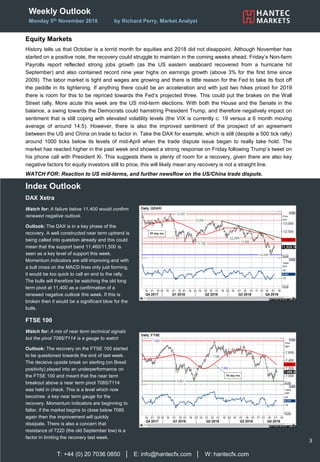Canada's Trade Strategy: Waiting For A Favorable US Deal

Table of Contents
The Importance of the US Market for Canada
Canada's economic success is undeniably linked to its trade relationship with the United States. Understanding the intricacies of this relationship is key to comprehending Canada's current trade strategy and its future economic prospects.
Economic Dependence: A Deep-Rooted Relationship
Canada's economy is significantly reliant on exports to the US. Approximately 75% of Canadian exports head south, making the US market absolutely vital for Canadian businesses and the overall GDP. This dependence has shaped Canadian trade policy for decades, and any significant shift in the US-Canada trade relationship has immediate and far-reaching consequences.
- Key export sectors heavily reliant on the US market:
- Energy (oil, gas, and electricity)
- Forestry products (lumber, pulp, and paper)
- Agriculture (grains, livestock, and dairy)
- Automotive parts and vehicles
- Quantifying the value: The sheer volume of goods and services exchanged between Canada and the US annually is staggering, representing hundreds of billions of dollars and a significant portion of both countries' GDP.
- Impact on Canadian jobs: Millions of Canadian jobs directly or indirectly depend on the Canada-US trade relationship. Any disruption to this trade flow can lead to job losses and economic hardship across various sectors.
Historical Trade Agreements: Shaping the Landscape
Past trade agreements have profoundly shaped the Canada-US trade relationship. NAFTA (North American Free Trade Agreement) and its successor, the USMCA (United States-Mexico-Canada Agreement), are prime examples.
- Key provisions of past agreements: These agreements have largely eliminated tariffs and other trade barriers, facilitating the free flow of goods and services between the three countries.
- Positive and negative consequences for Canadian businesses: While these agreements have created opportunities for Canadian businesses to access a vast market, they have also presented challenges, such as increased competition and the need to adapt to changing market dynamics.
- Unresolved issues: Despite the benefits of USMCA, certain issues remain, creating ongoing negotiations and impacting the long-term predictability of the Canada-US trade relationship. These issues often revolve around specific sectors, such as dairy or lumber, and demonstrate the complexities of balancing the needs of different industries within the larger trade framework.
Challenges in Negotiating a Favorable Canada US Trade Deal
Navigating the path to a favorable Canada US trade deal is fraught with challenges, stemming from both US policy and Canada's broader global trade strategy.
US Trade Policy Uncertainty: A Shifting Sandscape
The fluctuating nature of US trade policy under different administrations presents a significant challenge for Canada. Protectionist tendencies and unpredictable policy shifts create uncertainty for Canadian businesses, making long-term planning difficult.
- Examples of protectionist measures implemented by the US: Tariffs on Canadian steel and aluminum, threats of withdrawing from trade agreements, and other protectionist measures have demonstrably impacted Canadian industries.
- Impact on specific Canadian industries: Sectors like agriculture, forestry, and manufacturing are particularly vulnerable to changes in US trade policy, highlighting the need for resilience and diversification within the Canadian economy.
- Unpredictability for Canadian businesses: The unpredictability makes it challenging for Canadian businesses to invest, expand, and plan for the future with confidence. A stable and predictable trade environment is crucial for economic growth.
Competing Trade Priorities: Balancing Acts
Canada must carefully balance its strong relationship with the US with its participation in other trade partnerships, such as the CPTPP (Comprehensive and Progressive Agreement for Trans-Pacific Partnership).
- Advantages and disadvantages of diversifying trade partners: Diversification reduces reliance on a single market, mitigating risks associated with changes in US policy. However, it also requires navigating the complexities of multiple trade agreements and potentially conflicting rules of origin.
- Potential conflicts between different trade agreements: Ensuring consistency and avoiding conflicts between different agreements requires careful negotiation and policy coordination.
- Maintaining a strong US relationship while pursuing other opportunities: Finding the delicate balance between strengthening existing ties with the US and expanding its global trade footprint remains a key strategic challenge for Canada.
Canada's Current Trade Strategy and Diversification Efforts
In response to the challenges, Canada has adopted a multifaceted trade strategy focused on both bilateral agreements and domestic investment.
Focus on Bilateral Agreements: A Multifaceted Approach
Canada is actively pursuing bilateral trade agreements with countries beyond the US to diversify its export markets and reduce its dependence on a single trading partner.
- Recent examples of bilateral agreements: Agreements with countries in various regions showcase Canada's commitment to diversifying its trade relationships.
- Successes and challenges in these negotiations: While some agreements have proven successful, others have faced challenges, demonstrating the complexities of international trade negotiations.
- Contribution to economic diversification: These agreements contribute to a more resilient and diversified Canadian economy, reducing vulnerability to shifts in US trade policy.
Investing in Domestic Industries: Strengthening the Foundation
Canada is also actively investing in domestic industries to enhance competitiveness and reduce reliance on the US market.
- Examples of government support programs: Various government initiatives aim to support innovation, research and development, and the growth of key sectors within the Canadian economy.
- Impact on job creation and economic growth: These investments are intended to create jobs, stimulate economic growth, and build a more resilient Canadian economy.
- The role of innovation and technological advancements: Innovation plays a crucial role in strengthening domestic industries and positioning Canada for success in a globally competitive marketplace. Support for technological advancements is vital to this process.
Conclusion
Canada's trade strategy is currently heavily influenced by its desire to secure a favorable Canada US trade deal. While the US market remains crucial for Canadian economic prosperity, the fluctuating nature of US trade policy necessitates a diversified approach. Canada must continue to pursue bilateral agreements with other countries and invest in domestic industries to reduce its dependence on a single market. A long-term, sustainable trade strategy that balances strong US relations with wider global partnerships is vital for Canada’s continued economic success. Understanding the intricacies of the Canada US trade deal and the ongoing negotiations remains crucial for Canadian businesses and policymakers alike. Stay informed about developments in the Canada US Trade Deal and its implications for the Canadian economy.

Featured Posts
-
 Ariana Biermann And Her Boyfriend Explore Alaska
Apr 27, 2025
Ariana Biermann And Her Boyfriend Explore Alaska
Apr 27, 2025 -
 Robert Pattinson And The Horror Movie Aftermath A Chilling Sleepless Night
Apr 27, 2025
Robert Pattinson And The Horror Movie Aftermath A Chilling Sleepless Night
Apr 27, 2025 -
 Examining Grand National Horse Fatalities Ahead Of The 2025 Race
Apr 27, 2025
Examining Grand National Horse Fatalities Ahead Of The 2025 Race
Apr 27, 2025 -
 Dax Volatility Understanding The Impact Of Elections And Key Business Figures
Apr 27, 2025
Dax Volatility Understanding The Impact Of Elections And Key Business Figures
Apr 27, 2025 -
 Understanding The Value Of Middle Managers In Todays Business Environment
Apr 27, 2025
Understanding The Value Of Middle Managers In Todays Business Environment
Apr 27, 2025
